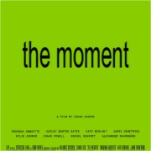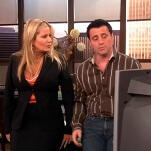During Frank Sinatra’s era of showbiz dominance, performers routinely projected a mix of cool and compassion: a reverence for the clichés of big-time entertainment cut with a willingness to wink at them. In step with the contradictions of the times, Frank Sinatra embodied the ideal of a master showman in the post-WWII era even as he looked somewhat put out by what was required. Sinatra commanded respect and demanded professionalism, yet whenever he delivered one of his long, corny intros to freshen up an old standard, or when he added superfluous words or nonsense syllables to a familiar lyric, or when he introduced some sub-30-year-old hotshot as his “good pal” and “an amazing talent,” he often seemed insincere. Sinatra was a little like the surly old grandpa at a family gathering, letting everyone know that he thinks these events are a pain in the ass, yet still furious at any distant cousin or aunt who fails to show up on time.
That tension is part of what made Sinatra such an electrifying performer. (Along with his remarkable voice and his gift for song- and sidekick-selection.) It also made Sinatra a difficult fit for the laid-back medium of television. Sinatra had multiple short-lived variety series in the ’50s, but never took the format seriously enough, seemingly assuming that his talent alone would be enough to keep viewers from changing the channel. Sinatra and television finally developed a fruitful working relationship in 1965, with the one-hour special A Man And His Music, commissioned to celebrate the singer’s 50th birthday and an accompanying double-album anthology. The special won an Emmy and Peabody for Sinatra’s stripped-down presentation of his personal history in song, and in the thick of the increasingly wild rock ‘n’ roll era, Sinatra’s classicism and casual self-effacement (even if the latter was a put-on) spoke to an older generation that was feeling abandoned by popular culture. For the rest of the decade, Sinatra specials became an annual event—and a sure-fire ratings winner.
The Frank Sinatra Concert Collection box set compiles all five of Sinatra’s ’60s specials, plus three ’70s shows produced after his brief retirement from the business, one from the early ’80s, and three more TV concerts: a BBC appearance from 1970, a Showtime special from 1982, and a rare Japanese telecast. Watching them all in sequence reveals a subtle progression in Sinatra’s sense of himself and his place in the business. Early on, between the multiple versions of “My Kind Of Town” and “The Lady Is A Tramp,” Sinatra banters with his guests or with the audience (or to the camera, while a laugh track fills the silences), sometimes making fun of his age, or how lousy some of his movies were, or how skinny he used to be. In 1966’s A Man And His Music Part II, Sinatra brings out his daughter Nancy, then riding high on the pop charts, and pokes fun at her overnight success while also mocking the fustiness of his own music. In 1967’s A Man And His Music + Ella + Jobim, Sinatra introduces himself as “Nancy’s father,” but after two consecutive hit specials, he’d become confident enough to give over a portion of his time to two artists he admired: Ella Fitzgerald and Antonio Carlos Jobim. For 1968’s Francis Albert Sinatra Does His Thing, Sinatra brings out Diahann Carroll for a medley of African-American spirituals, and speaks about the great strides made in civil rights and popular music, before joining The 5th Dimension for a song while wearing a frilly blue Nehru jacket. Then finally, for 1969’s Sinatra, the singer comes out in a tux and fronts a big orchestra, almost as though he took one look at himself in the 1968 special and told his producer he wasn’t going to look like a clown ever again.
And so he doesn’t. The ’70s and ’80s specials carry on some of the traditions of the previous decade: Sinatra acts humble as he tries to explain to “the kids out there” who he is; Sinatra looks forlornly off in the distance as he sings a medley of sad saloon songs; and Sinatra gamely performs at least one contemporary hit (like “Bad, Bad Leroy Brown” in the live, Howard Cosell-hosted 1974 show Sinatra: The Main Event) and one recently recorded song that will be quickly forgotten (like “Monday Morning Quarterback” in 1981’s modest “comeback” special Sinatra: The Man And His Music). The difference is that the broadcasts increasingly moved out of studios and into large arenas—as in 1982’s Concert For The Americas, performed in a big amphitheater in the Dominican Republic—as Sinatra gradually became comfortable with his own legend. He still looked like he was one blown cue away from dropping his microphone and storming off the stage, but that’s only because in the last decades of his career, Sinatra grew more certain that his blend of sentimentality and aloof class was the proper approach for an entertainer. And so he went out year after year and delivered the goods: never ecstatic, but always in charge.
Key features: A bonus disc containing scattered performances from Sinatra’s ’50s variety shows, including a complete 1957 Christmas episode in which Sinatra and special guest Bing Crosby exchange presents, have dinner, entertain carolers, break awkwardly into song, and toss around hepcat lingo like “grab the drapes and get the skimmer” while passing a hat and coat along to Sinatra’s valet.








































